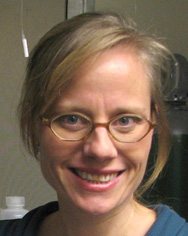非常抱歉,
你要访问的页面不存在,
非常抱歉,
你要访问的页面不存在,
非常抱歉,
你要访问的页面不存在,
验证码:

职称:Professor
所属学校:Carnegie Mellon University
所属院系:biophysics
所属专业:Biophysics
联系方式:412-268-1198
Ph.D., University of California, Berkeley Postdoctoral Appointment, Stanford University School of Medicine
How does experience shape the brain? Research in the Barth lab is focused on understanding how experience assembles and alters the properties of neural circuits in the cerebral cortex, in both normal and disease states. The lab has a specific focus on somatosensation in the mouse model system, where specific types of sensory input from the skin are used to drive neural activity to change the strength of synaptic connections and the firing output of cortical neurons. This neural plasticity can result in enhanced perceptual capabilities and influence subsequent learning. A detailed examination of how synapses are changed by experience is revealing fundamental principles about both perception and learning across many neural systems. In addition, researchers in the lab are using electrophysiological recordings, electron microscopy, and computational modeling to understand how functional networks are constructed and optimized in the neocortex. Experiments take advantage of transgenic mice to manipulate gene expression and label defined neural subsets and whole-cell recording and imaging to quantitate the electrical properties of cortical neurons. Ongoing projects include: Experience-dependent plasticity in somatosensory cortex FosGFP transgenic mice were developed in the Barth lab more than 10 years ago to identify neurons that have been activated (and changed) by in vivo experience. We are using fos-driven expression of fluorescent reporter genes as well as channelrhodopsin to identify and record from specific neocortical areas and neurons that have been altered by experience. This approach has revealed molecular details about the mechanisms behind synaptic potentiation, and has tested models about how different cells capture synaptic change. Recent research in the lab has established that experience-dependent plasticity undergoes multiple phases before it is finally consolidated, a finding that has implications for many other forms of learning across the brain. Development of neocortical networks for somatosensation Somatosensation is a complex sense that is constructed from a multitude of specialized receptor neurons in the skin, each tuned to specific stimulus properties. Research in the lab has traditionally focused on the sense of touch mediated through specialized hairs on the mouse face. We have begun to investigate other neocortical maps that are specialized for other skin sensations, such as pain and temperature. These modalities appear to be differently encoded in the cerebral cortex, and offer exciting approaches for precise stimulus control to assemble and modulate circuit function during development and in adult animals. Activity-dependent changes in ion channel function Neurons respond to experience not only by changing the synaptic strength, but also by adjusting their excitable properties. We have identified specific ion channels that are regulated by activity, both during normal experience and also after epileptic seizures. The molecular mechanisms that regulate channel currents over both short and long time scales offer the potential to control neural excitability and treat seizure disorders. Real-time, live cell imaging of ion channel distribution has revealed new principles for channel regulation. Network assembly and optimization using principles of neural design The cerebral cortex has expanded enormously through phylogeny, but recent analysis indicates that many neurons are virtually silent. Why have so many cells, if they aren’t firing? We have been using expression of the fosGFP transgene to identify neural ensembles that may be functionally linked, and are studying how these ensembles are created during development and by experience-dependent plasticity. In addition, members of the lab are modeling competitive processes for establishing neural ensembles to determine what principles optimize efficiency, cost, and robustness in information transfer.